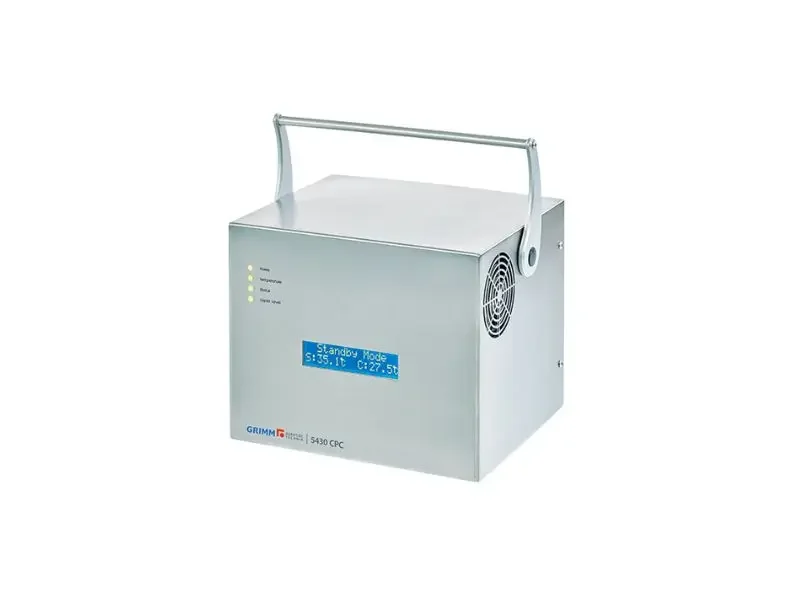How it works
A Condensation Particle Counter (CPC) uses the same laser scatter method of detection as many of our other dust monitors. A Condensation Particle Counter is however able to measure much smaller nanoparticles than a normal laser-based dust monitor due to the condensation chamber. In the condensation chamber, dust particles are exposed to a supersaturated solution of n-Butanol. The butanol condenses on the surface of the dust particles, causing them to grow to a sufficient size for laser scatter detection.
Servicing
Data sheets and specifications are subject to change, and Enviro Technology cannot be held responsible for inaccuracies in manufacturer-issued data sheets. To confirm specifications and obtain the latest issue of the data sheet, please contact us.
Datasheets
5430 Basic PMP Condensation Particle Counter
5431 Standard PMP Condensation Particle Counter
Specifications
- Precise nanoparticle counting: n-Butanol based CPC, Single count mode (up to 50,000 particles/cm3), Coincidence correction: < 10% up to 23,000 particles/cm³, Linearity: R² ≥ 0.98 for 1 … 23,000 particles/cm³, Counting efficiency within 50 ±12% at 23 nm and ≥ 90% at 41 nm
- Sample flow rate controlled by critical orifice: External vacuum required;
- For 5431: Sample flow rate controlled by critical orifice: Integrated sample air pump, no external vacuum required
- Saturator shutter
- Continuous condensate drain with micro pump
- Wide range power supply: 90 … 264 VAC, 47 … 63 Hz, 80 … 130 W
- Complies to the GPRE particle measurement program (PMP) for Euro 5 and 6, regulation 83






